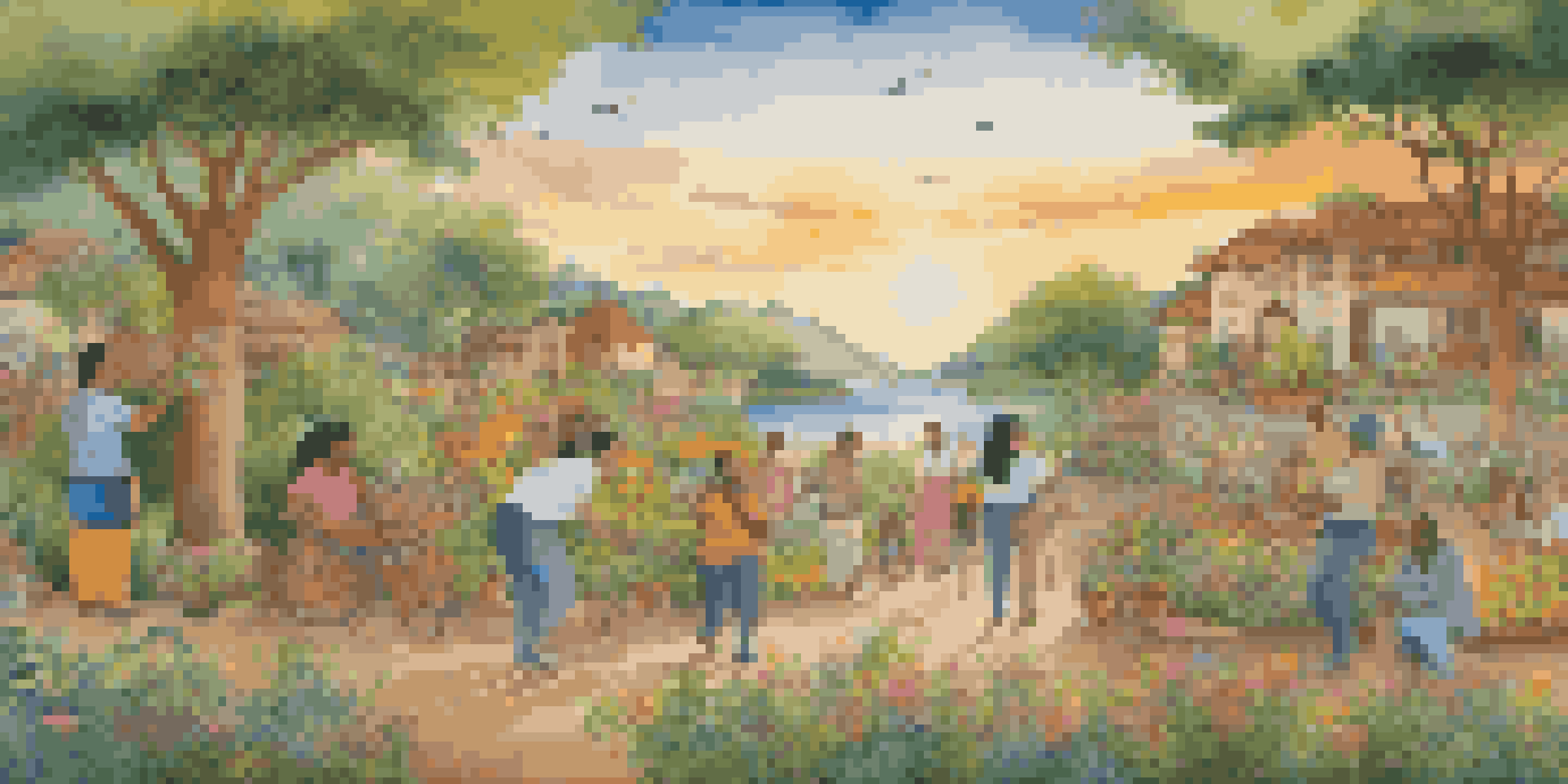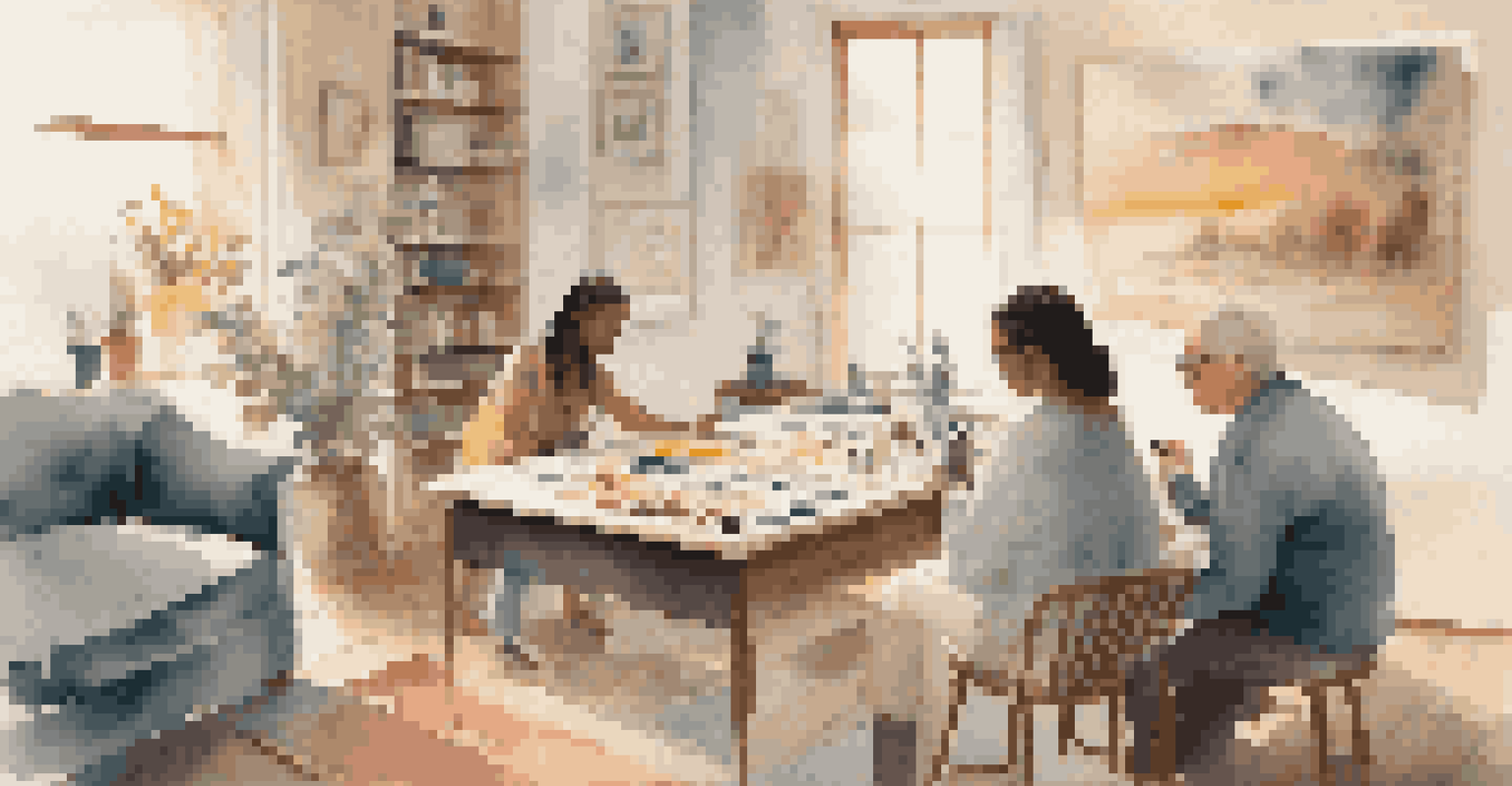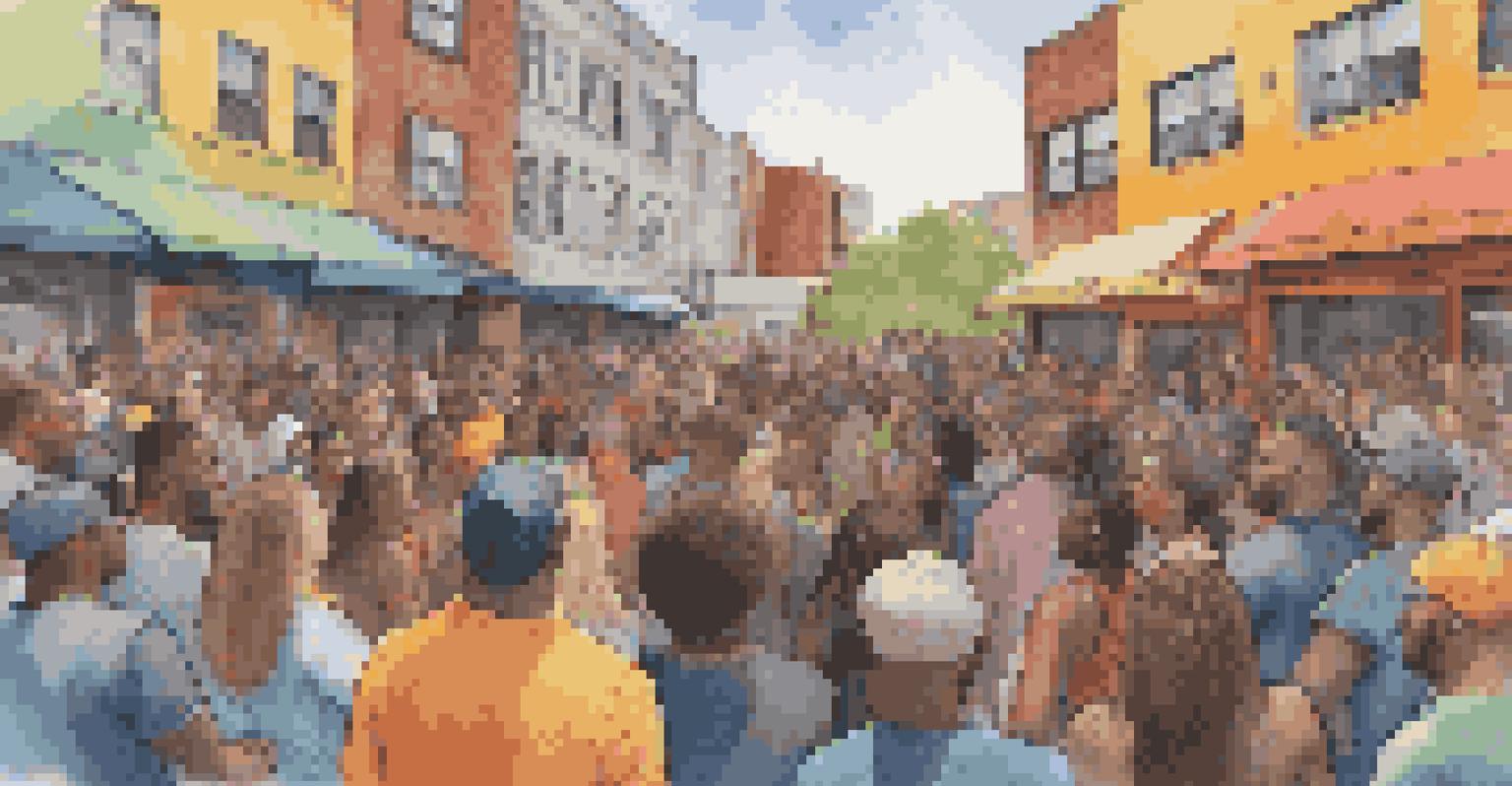The Role of Art in Healing Through Cultural Expression

Art as a Universal Language for Healing
Art transcends barriers, allowing individuals from diverse backgrounds to connect. It speaks to our emotions and experiences, often expressing what words cannot. This universality makes art a powerful tool for healing, as it can resonate deeply with people, fostering understanding and empathy.
Art is the most beautiful of all lies; it is a form of truth that speaks to the heart.
For instance, a painting can evoke feelings of joy, sadness, or nostalgia, inviting viewers to reflect on their own lives. Through this reflection, individuals may find a sense of solace and connection to others who have similar experiences. By tapping into these shared emotions, art can facilitate healing on both personal and communal levels.
Moreover, creating art can be a cathartic experience, helping individuals process trauma or grief. Whether through painting, music, or dance, the act of creating allows for emotional release, making space for healing and growth.
Cultural Expression: A Pathway to Understanding
Cultural expression through art provides insight into the values, struggles, and triumphs of different communities. When we engage with art from various cultures, we gain a deeper understanding of their histories and perspectives. This understanding can bridge divides and promote healing between different groups.

For example, Indigenous art often reflects the stories and traditions of its people, highlighting their resilience and connection to the land. By appreciating these works, we can acknowledge historical injustices and foster a sense of respect and solidarity. This cultural exchange enriches our collective experience and can lead to healing through acknowledgment and empathy.
Art Facilitates Emotional Healing
Art serves as a powerful medium for healing by enabling individuals to express emotions and connect with others on a deeper level.
Furthermore, cultural expression can empower marginalized voices, allowing them to share their narratives and experiences. This empowerment is crucial for healing, as it validates their struggles and fosters community support.
Art Therapy: A Structured Approach to Healing
Art therapy is a professional practice that leverages the creative process to improve mental health. It provides individuals with a safe environment to express their feelings and thoughts through art, guided by trained therapists. This structured approach can be particularly effective for those who find it hard to articulate their emotions verbally.
The purpose of art is not a rarified, intellectual distillate; it is a very human, all-too-human search for a better life.
In art therapy, participants might engage in activities like painting, drawing, or sculpting, which can help them explore their inner worlds. For instance, someone dealing with anxiety may find relief by channeling their feelings into a piece of art, allowing them to externalize what they struggle to express. This process not only aids in healing but can also foster self-discovery.
Moreover, art therapy can be tailored to meet the needs of diverse populations, including children, veterans, and those with chronic illnesses. By adapting techniques to suit individual experiences, art therapy can effectively support various healing journeys.
The Role of Community in Artistic Healing
Community plays a vital role in the healing power of art. Participating in group art activities can foster a sense of belonging and connection among individuals. This communal aspect can significantly enhance the healing process, as shared experiences create bonds that support emotional well-being.
Consider community murals that bring together artists and residents to express collective histories and aspirations. These projects not only beautify public spaces but also provide a platform for healing discussions about social issues. Through collaboration, participants can share their stories, find common ground, and promote healing within the community.
Cultural Art Empowers Communities
Engaging with cultural art allows communities to reclaim narratives and foster a sense of belonging, which is crucial for healing and resilience.
Additionally, communal art events, such as workshops or performances, can serve as safe spaces for individuals to explore their creativity together. This shared journey can cultivate understanding and resilience, reinforcing the idea that healing is often a collective experience.
Healing Through Storytelling in the Arts
Storytelling is a fundamental aspect of art that allows for the sharing of personal and cultural narratives. From plays to poetry, storytelling connects individuals to their histories and identities, fostering healing through recognition and validation. When we hear or tell stories, we engage in a powerful exchange that can resonate deeply.
For example, a spoken word performance might recount experiences of loss or struggle, offering listeners a chance to empathize and reflect on their own journeys. This act of sharing can be therapeutic, as it cultivates a sense of community and understanding. Through storytelling, we can confront difficult emotions and find solace in shared experiences.
Moreover, storytelling in the arts can challenge societal norms and injustices, prompting healing conversations. By addressing these topics through creative expression, we create a space for dialogue, fostering awareness and compassion among diverse audiences.
Art and Cultural Identity: A Means of Empowerment
Art plays a crucial role in shaping and expressing cultural identity, serving as a means of empowerment for individuals and communities. By engaging with their cultural heritage through art, people can reclaim their narratives and celebrate their uniqueness. This empowerment is essential for healing, as it fosters pride and resilience.
For instance, traditional crafts or performances can connect individuals to their ancestry, reinforcing a sense of belonging. When people actively engage in their cultural practices, they not only honor their heritage but also promote intergenerational dialogue and understanding. This connection to culture can be a powerful source of strength during challenging times.
Art Therapy Enhances Mental Well-Being
Art therapy provides a structured approach for individuals to explore feelings and promote healing through creative expression.
Furthermore, showcasing cultural art forms in public spaces can encourage appreciation and respect for diverse identities. This visibility is essential for healing societal divides, as it promotes inclusivity and understanding among different groups.
The Future of Art in Healing and Cultural Expression
As we look to the future, the intersection of art and healing through cultural expression will continue to evolve. With advancements in technology, new platforms for artistic expression are emerging, allowing for broader access to diverse art forms. This accessibility can democratize the healing process, reaching more individuals and communities.
For example, digital art and virtual galleries can connect artists and audiences across the globe, fostering cross-cultural dialogues and collaborations. These innovations can help amplify marginalized voices, ensuring that their stories and experiences are heard and valued. This shift not only enriches the art world but also enhances the healing potential of cultural expression.

Ultimately, as we embrace the healing power of art, we must prioritize inclusivity and community engagement. By fostering environments where diverse artistic expressions can flourish, we contribute to a more compassionate and understanding society, paving the way for collective healing.